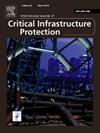在相互依赖的运输和雨水网络中模拟洪水传播和级联故障
IF 5.3
3区 工程技术
Q1 COMPUTER SCIENCE, INFORMATION SYSTEMS
International Journal of Critical Infrastructure Protection
Pub Date : 2025-01-16
DOI:10.1016/j.ijcip.2025.100741
引用次数: 0
摘要
本研究解决了在地理上相互依赖的运输和雨水系统中洪水传播和级联故障建模的挑战,通过有效地捕获相互依赖系统中故障的时间进展和空间分布,填补了文献中的一个关键空白。我们开发了一个基于传染性的易感-暴露-洪水-恢复(SEFR)模型来监测这些相互关联系统中的洪水传播动态。我们使用多层网络表示建立了交通和雨水系统的空间相互依赖阈值,并结合了最先进的水文工程中心的河流分析系统(HEC-RAS)来生成可靠的洪水数据。SEFR模型将多层网络的拓扑特征与洪水模拟数据相结合,准确地模拟了洪水破坏和级联破坏的传播过程。以俄克拉荷马的诺曼为研究对象,我们使用HEC-RAS 2D洪水模拟数据校准了SEFR模型,模拟了2021年7月27日的一次大降水事件。结果表明,SEFR模型能够识别洪水传播的时空变化,突出显示处于风险中的关键基础设施组成部分,包括在洪水事件中容易发生级联故障的特定路段和雨水系统要素。这些发现为相互依赖的系统恢复力提供了新的见解,并为减轻不利洪水影响的干预策略提供了信息,增强了关键基础设施抵御自然灾害的稳健性。本文章由计算机程序翻译,如有差异,请以英文原文为准。
Modeling flood propagation and cascading failures in interdependent transportation and stormwater networks
This study addresses the challenge of modeling flood propagation and cascading failures in geographically interdependent transportation and stormwater systems, filling a critical gap in the literature by effectively capturing the temporal progression and spatial distribution of failures in interdependent systems. We developed a contagion-based Susceptible-Exposed-Flooded-Recovered (SEFR) model to monitor flood propagation dynamics within these interconnected systems. We established a spatial interdependency threshold for transportation and stormwater systems using a multilayer network representation and incorporated the state-of-the-art Hydrologic Engineering Center's River Analysis System (HEC-RAS) to generate reliable flood data. The SEFR model combines the topological characteristics of the multilayer network with simulated flood data to accurately model the propagation of flood damage and cascading failures. Focusing on Norman, Oklahoma, we calibrated the SEFR model using the HEC-RAS 2D flood simulation data for a major precipitation event on July 27, 2021. Results demonstrate the SEFR model's ability to identify the spatiotemporal variations in flood propagation, highlighting critical infrastructure components at risk, including specific road segments and stormwater system elements vulnerable to cascading failures during flooding events. The findings provide new insights into interdependent system resilience and inform intervention strategies to mitigate adverse flooding impacts, enhancing the robustness of critical infrastructure against natural disasters.
求助全文
通过发布文献求助,成功后即可免费获取论文全文。
去求助
来源期刊

International Journal of Critical Infrastructure Protection
COMPUTER SCIENCE, INFORMATION SYSTEMS-ENGINEERING, MULTIDISCIPLINARY
CiteScore
8.90
自引率
5.60%
发文量
46
审稿时长
>12 weeks
期刊介绍:
The International Journal of Critical Infrastructure Protection (IJCIP) was launched in 2008, with the primary aim of publishing scholarly papers of the highest quality in all areas of critical infrastructure protection. Of particular interest are articles that weave science, technology, law and policy to craft sophisticated yet practical solutions for securing assets in the various critical infrastructure sectors. These critical infrastructure sectors include: information technology, telecommunications, energy, banking and finance, transportation systems, chemicals, critical manufacturing, agriculture and food, defense industrial base, public health and health care, national monuments and icons, drinking water and water treatment systems, commercial facilities, dams, emergency services, nuclear reactors, materials and waste, postal and shipping, and government facilities. Protecting and ensuring the continuity of operation of critical infrastructure assets are vital to national security, public health and safety, economic vitality, and societal wellbeing.
The scope of the journal includes, but is not limited to:
1. Analysis of security challenges that are unique or common to the various infrastructure sectors.
2. Identification of core security principles and techniques that can be applied to critical infrastructure protection.
3. Elucidation of the dependencies and interdependencies existing between infrastructure sectors and techniques for mitigating the devastating effects of cascading failures.
4. Creation of sophisticated, yet practical, solutions, for critical infrastructure protection that involve mathematical, scientific and engineering techniques, economic and social science methods, and/or legal and public policy constructs.
 求助内容:
求助内容: 应助结果提醒方式:
应助结果提醒方式:


